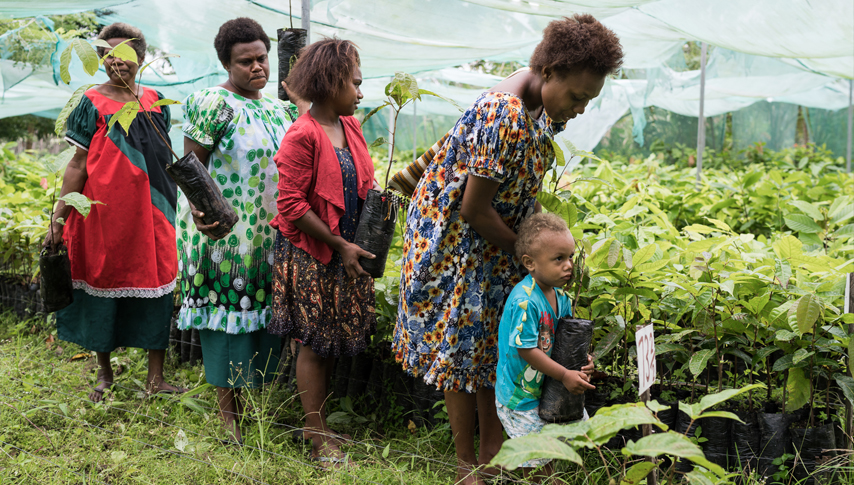New publication provides the first ‘encyclopaedia’ of trees in the Oceania region

Landholders, foresters and tree enthusiasts in Oceania are set to benefit after the release of a new book, which for the first time catalogues the different species of trees in the region.
The book, Trees for life in Oceania: conservation and utilisation of genetic diversity, funded by the Australian Centre for International Agricultural Research (ACIAR), profiles close to 60 species of trees and shrubs critical to smallholder livelihoods in the Pacific.
The book combines the work of more than 85 researchers and scientists who contributed their knowledge, experience and time to produce a valuable resource that will support the sustainable use of trees and increase livelihoods in the region through agroforestry.
‘This book is an up-to-date encyclopaedia about the most important trees in the Pacific, how they can be protected and how they can be used to improve people’s lives,’ says Tony Bartlett, Forestry Research Program Manager at ACIAR.
‘In Pacific island countries, there’s a comparative gap in the information knowledge. The concept for the book was to do a stocktake of all the trees in the Oceania region that have value for generating livelihoods, detail how well are they conserved and whether the species is endangered.
‘This will enable future tree growers to be better informed and more strategic about genetic diversity,’ says Bartlett, who has worked in forestry for more than 40 years. ‘If you are trying to plan for challenges such as climate change, you need to understand the existing population of the species to make the best decisions. This book will help with that process.’
Forests and trees play a vital role in the economic, social, environmental and cultural lives of people living in Oceania, but many species are under threat from habitat loss, overharvesting and invasive weeds.
In addition to these challenges, people living in this region are considered to be the most susceptible to the impacts of climate change, further highlighting the importance to use trees sustainably.
‘We envisage this book will provide a key resource, not only for current and future donor-funded forestry projects but also for the broader tree-planting community throughout the region,’ says Lex Thomson, editor of the book and Associate Professor of Agroforestry at the University of the Sunshine Coast.
‘The core of the book is the species accounts,’ says Thomson. ‘These provide background biological information, including species-specific knowledge of genetic diversity and conserving genetic resources, on around 60 high-priority, mainly indigenous tree and shrub species in Oceania as well as a small number of widely planted exotic species.’
‘The species covered include those of importance culturally as well as for timber and non-timber products and services, such as fruit, nuts, essential oils, medicines, flowers/ornamental, soil and coastal protection, land rehabilitation, carbon sequestration and in mixed traditional and modern agroforestry systems.’
The book has been distributed to forestry departments, universities and other relevant organisations throughout Oceania, and a digital version is available for free on ACIAR’s website.
More information: Lisa Borthwick – Director, Outreach, ACIAR
Email: [email protected] Phone:+61 2 6217 0521


